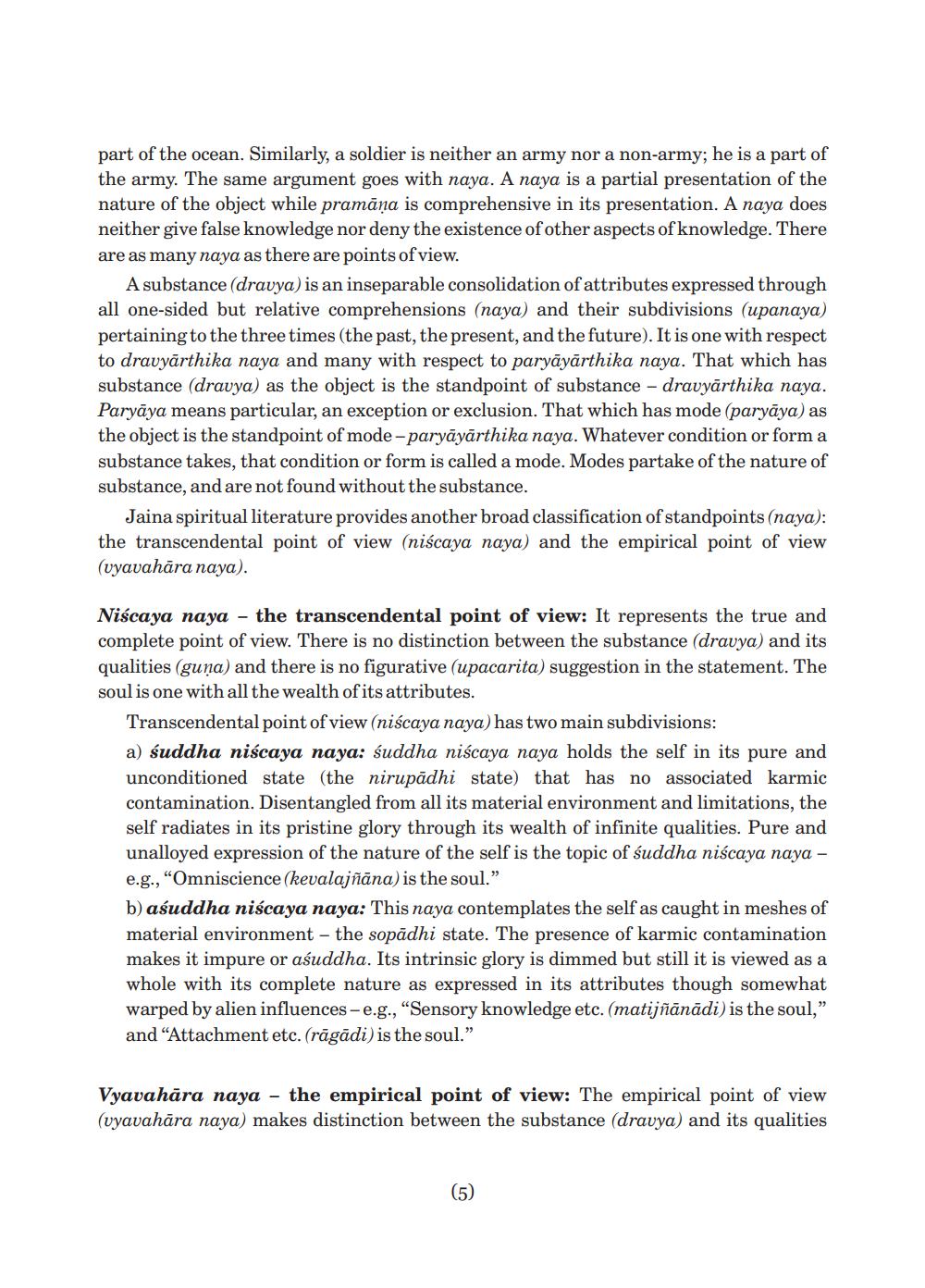________________
part of the ocean. Similarly, a soldier is neither an army nor a non-army; he is a part of the army. The same argument goes with naya. A naya is a partial presentation of the nature of the object while pramāṇa is comprehensive in its presentation. A naya does neither give false knowledge nor deny the existence of other aspects of knowledge. There are as many naya as there are points of view.
A substance (dravya) is an inseparable consolidation of attributes expressed through all one-sided but relative comprehensions (naya) and their subdivisions (upanaya) pertaining to the three times (the past, the present, and the future). It is one with respect to dravyārthika naya and many with respect to paryāyārthika naya. That which has substance (dravya) as the object is the standpoint of substance - dravyārthika naya. Paryāya means particular, an exception or exclusion. That which has mode (paryāya) as the object is the standpoint of mode-paryāyārthika naya. Whatever condition or form a substance takes, that condition or form is called a mode. Modes partake of the nature of substance, and are not found without the substance.
Jaina spiritual literature provides another broad classification of standpoints (naya): the transcendental point of view (niscaya naya) and the empirical point of view (vyavahāra naya).
Niscaya naya - the transcendental point of view: It represents the true and complete point of view. There is no distinction between the substance (dravya) and its qualities (guna) and there is no figurative (upacarita) suggestion in the statement. The soul is one with all the wealth of its attributes.
Transcendental point of view (niscaya naya) has two main subdivisions: a) śuddha niscaya naya: śuddha niscaya naya holds the self in its pure and unconditioned state (the nirupādhi state) that has no associated karmic contamination. Disentangled from all its material environment and limitations, the self radiates in its pristine glory through its wealth of infinite qualities. Pure and unalloyed expression of the nature of the self is the topic of suddha niscaya naya - e.g., "Omniscience (kevalajñāna) is the soul." b) aśuddha niscaya naya: This naya contemplates the self as caught in meshes of material environment - the sopādhi state. The presence of karmic contamination makes it impure or asuddha. Its intrinsic glory is dimmed but still it is viewed as a whole with its complete nature as expressed in its attributes though somewhat warped by alien influences-e.g., "Sensory knowledge etc. (matijñānādi) is the soul,” and “Attachment etc. (rāgādi) is the soul."
Vyavahāra naya - the empirical point of view: The empirical point of view (vyavahāra naya) makes distinction between the substance (dravya) and its qualities
(5)




